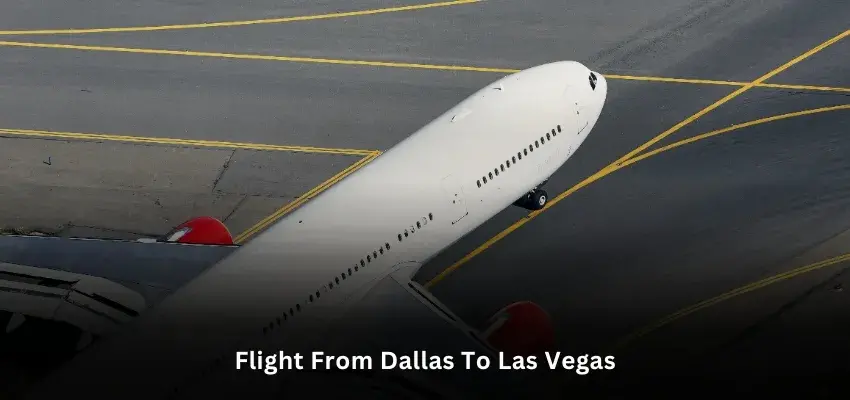How Long Is a Flight from Dallas to Las Vegas?

When planning a trip from Dallas to Las Vegas, one of the crucial factors to consider is the duration of the flight. Whether you're traveling for business or leisure, knowing how long the journey will take can help you better prepare and manage your time. In this article, we will explore the various aspects that influence the duration of a flight from Dallas to Las Vegas, ensuring you have all the information you need for a smooth travel experience.
The Distance Between Dallas and Las Vegas
The first thing to consider when estimating the duration of a flight is the distance between the two cities. Dallas, located in Texas, and Las Vegas, situated in Nevada, are not neighboring states. The approximate aerial distance between them is around 1,100 miles.
Nonstop Flights
Direct Routes
If you're looking for the quickest way to get from Dallas to Las Vegas, nonstop flights are your best option. These flights take you directly from one city to the other without any layovers. On average, nonstop flights cover the distance in about 3 to 3.5 hours.
Airlines Offering Nonstop Flights
Several airlines offer nonstop flights between Dallas and Las Vegas, including American Airlines, Southwest Airlines, and Spirit Airlines. These carriers often provide frequent and convenient flight options.
Connecting Flights
While nonstop flights are the fastest, they may not always be the most economical or available option. Connecting flights can be a choice, but they come with added travel time due to layovers.
Common Layover Cities
Common layover cities for flights from Dallas to Las Vegas include Denver, Phoenix, and Los Angeles. Depending on the duration of the layover, connecting flights can add 1 to 5 hours to your travel time.
Factors Affecting Flight Duration
Weather Conditions
Weather plays a significant role in the duration of a flight. Delays due to adverse weather conditions are not uncommon, so it's essential to check the weather forecast for both departure and arrival cities before your trip.
Aircraft Type
The type of aircraft used for the flight can also impact the duration. Larger planes tend to travel faster and more efficiently than smaller ones.
Air Traffic
Air traffic can lead to delays, especially during peak travel times. Booking flights during off-peak hours can help reduce the risk of traffic-related delays.
Tips for Minimizing Travel Time
To ensure your flight from Dallas to Las Vegas is as swift as possible, consider the following tips:
- Book a nonstop flight if your schedule allows.
- Choose flights during off-peak hours to avoid congestion.
- Keep an eye on the weather forecast and plan accordingly.
- Arrive at the airport early to allow time for security checks and boarding.
Conclusion
In conclusion, the duration of a flight from Dallas to Las Vegas can vary depending on various factors. Nonstop flights typically take around 3 to 3.5 hours, while connecting flights can add extra travel time due to layovers. To ensure a smooth and timely journey, it's essential to consider factors such as weather, aircraft type, and air traffic. By following the tips mentioned, you can make your trip from Dallas to Las Vegas more efficient and enjoyable.
Book Now or call us at +1 (833) 902-2090 for personalized assistance.
FAQs
1. Are there any direct flights from Dallas to Las Vegas?
- Yes, several airlines offer nonstop flights between the two cities, providing a convenient option for travelers.
2. How far is the aerial distance between Dallas and Las Vegas?
- The approximate distance is around 1,100 miles.
3. Can weather conditions affect flight duration?
- Yes, adverse weather conditions can lead to delays and affect the overall duration of the flight.
4. What are some common layover cities for connecting flights between Dallas and Las Vegas?
- Common layover cities include Denver, Phoenix, and Los Angeles.
5. How can I minimize travel time on my flight from Dallas to Las Vegas?
- You can minimize travel time by booking nonstop flights, choosing off-peak hours, monitoring the weather, and arriving at the airport early.
